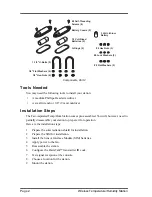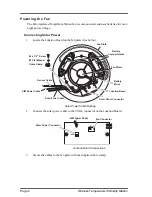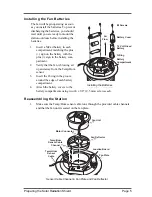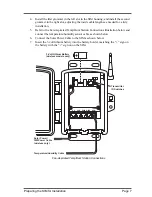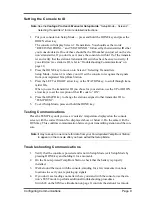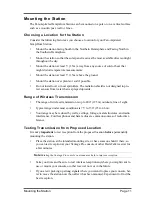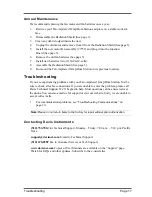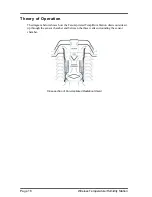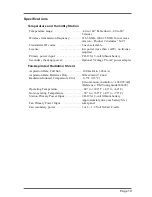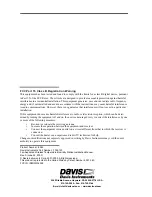
Mounting the Station
Page 11
Mounting the Station
The Fan-Aspirated Temp/Hum Station can be mounted on a pole or on a vertical surface
such as a wooden post, wall or fence.
Choosing a Location for the Station
Consider the following factors as you choose a location for your Fan-Aspirated
Temp/Hum Station:
•
Mount the station facing South in the Northern Hemisphere and Facing North in
the Southern Hemisphere.
•
Mount the station so that the solar panel receives the most available direct sunlight
throughout the day.
•
Mount the station at least 5’ (1.5m) away from any source of cold or heat that
might distort temperature measurements.
•
Mount the station at least 5’ (1.5m) above the ground.
•
Mount the station over plants or soil if possible.
•
Do not install over or near sprinklers. The radiation shield is not designed to pro-
tect sensors from water that is sprayed upwards.
Range of Wireless Transmission
•
The range of wireless transmission is up to 400’ (125 m) outdoors, line of sight.
•
Typical range under most conditions is 75’ to 150’ (23 to 46 m).
•
Your range may be reduced by walls, ceilings, foliage, metal structures, and radio
interferance. Cordless phones and ham radios are common sources of radio inter-
ferance.
Testing Transmission from Proposed Location
It is
very important
to test reception from the proposed location
before
permanently
mounting the station.
•
Place the station at the intended mounting site, or have someone hold it there, so
you can test reception at your Vantage Pro console or other DavisTalk receiver for
a few minutes.
Note:
Rotating the Vantage Pro console’s antenna may help to improve reception.
•
Take your time and be sure to test wireless reception anywhere you might want to
use or mount your console or other receiver now or in the future.
•
If you aren’t picking up strong signals where you intend to place your console, bet-
ter to move the station now than after it has been mounted. Experiment to find the
best reception.


